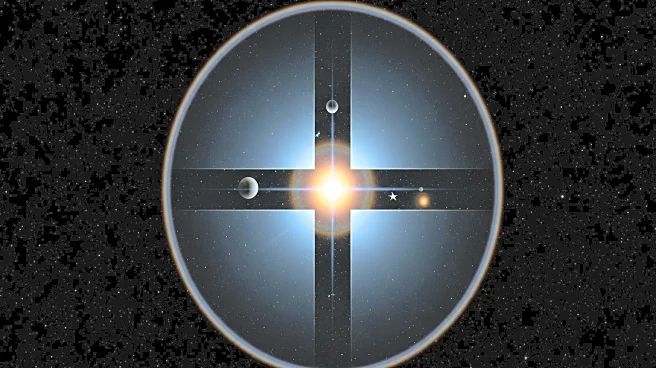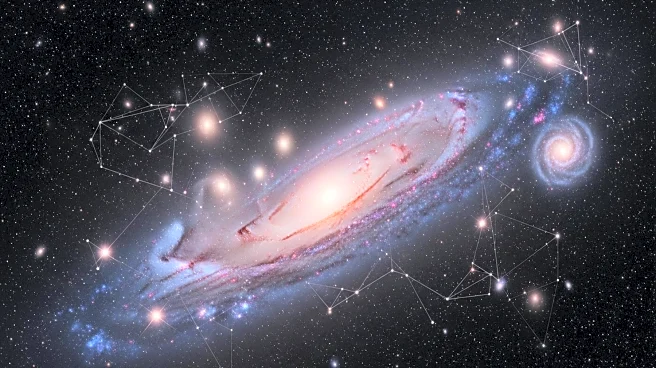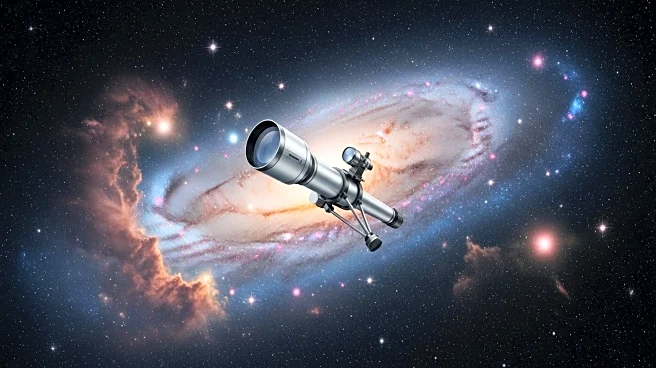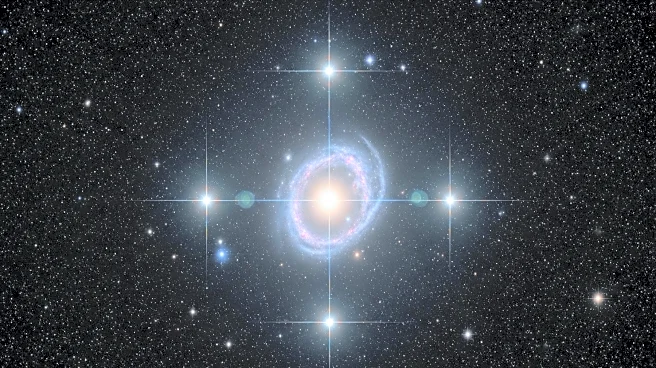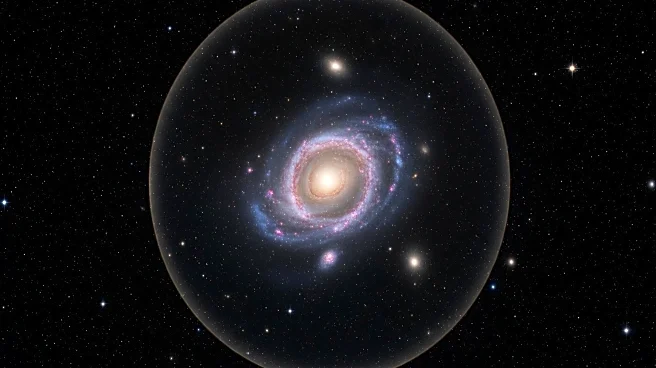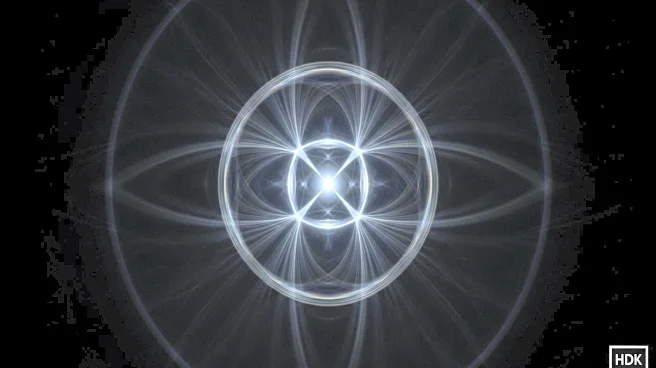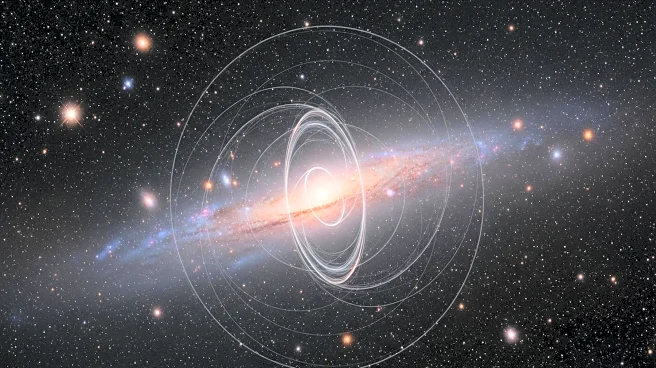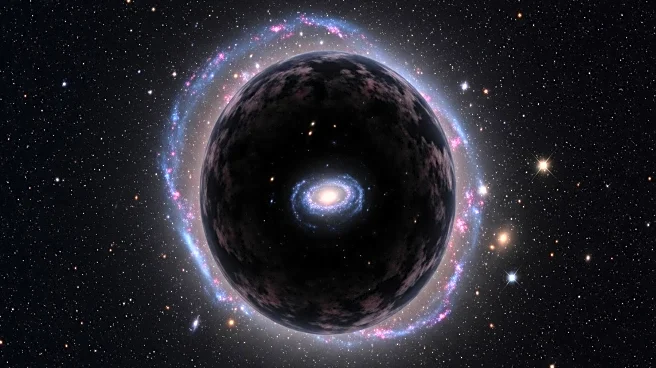What is the story about?
What's Happening?
Astronomers have identified a unique cosmic phenomenon known as an 'Einstein Cross' that has revealed the presence of dark matter. The discovery was made by a team led by Pierre Cox from the French National Center for Scientific Research (CNRS). The Einstein Cross, named HerS-3, features an unusual fifth blob of light at its center, which is not typically observed in such configurations. Theoretical astrophysicist Charles Keeton from Rutgers University noted that this anomaly suggests the presence of a massive field of gravity bending the light, indicative of dark matter. The light from HerS-3, a dusty, star-forming galaxy, has traveled 11.7 billion years to reach Earth. Researchers initially suspected a glitch but confirmed the phenomenon through computer modeling, which ruled out visible galaxies as the cause. The study concludes that a dark matter halo is responsible for the warped spacetime observed.
Why It's Important?
This discovery is significant as it provides a rare opportunity to study dark matter, a mysterious substance that interacts with the universe primarily through gravity. Dark matter is crucial for understanding the universe's structure, as it accounts for the excess gravity observed. The Einstein Cross phenomenon allows astronomers to magnify distant galaxies, offering insights into star formation during the early universe. Additionally, it provides a means to study the characteristics of the galaxy group lensing HerS-3 and the properties of the associated dark matter halo. This research enhances our understanding of cosmic evolution and the role of dark matter in shaping the universe.
What's Next?
The findings from the HerS-3 system offer a unique astrophysical laboratory for further exploration. Researchers plan to study the nearly edge-on dusty starburst galaxy at the peak of cosmic evolution. The study will also focus on the galaxy group lensing HerS-3 and the massive dark matter halo associated with it. These investigations could lead to new insights into the nature of dark matter and its influence on galaxy formation and evolution. The research has been published in The Astrophysical Journal, paving the way for future studies in this field.
Beyond the Headlines
The discovery of the HerS-3 system highlights the potential for using cosmic phenomena to explore unseen aspects of the universe. The ability to detect dark matter through gravitational lensing opens new avenues for understanding the universe's hidden components. This research underscores the importance of advanced modeling techniques in revealing phenomena that are not directly observable. The study also contributes to the broader field of astrophysics by providing a method to investigate the properties of dark matter and its impact on cosmic structures.
AI Generated Content
Do you find this article useful?
